#Barque design
Explore tagged Tumblr posts
Text
youtube
#Barque#Bateau en aluminium#Bateau de pêche#Bateau à fond plat#barque a fond plat#Bateau léger#Bateau personnalisable#Barque de peche#Barque de pêche#Bateau de pêche en aluminium#bateau de pêche en aluminium#Canot en aluminium#Bateau en aluminium léger#Barque en aluminium#Barque aluminium#Barque légère#Barque fond plat#Barque design#Bateau#Barque haut de gamme#Barque customizable#Barque ultra légère#Barque artistique#Barque pêche sportive#Youtube
0 notes
Text

Today we're heading into the eternal ice of Antarctica and keeping a special lady company. The beautiful Endurance is waiting for us in door no. 7
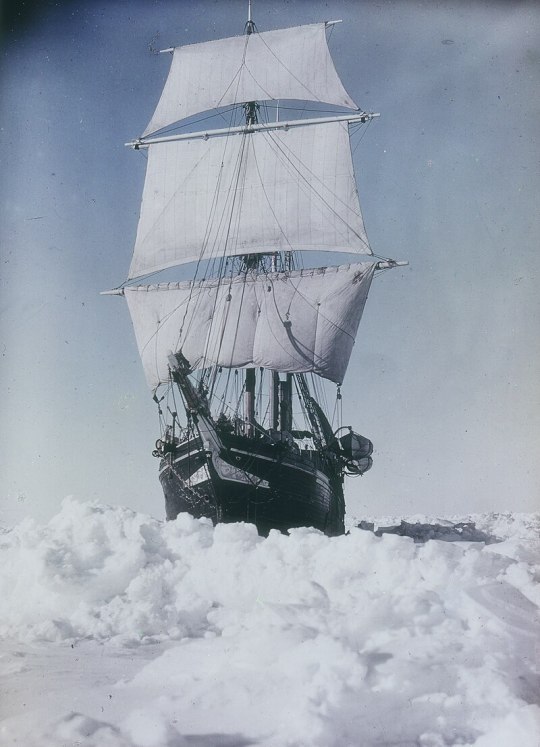
More about her here:
The three-masted schooner barque designed by Ole Aanderud Larsen (1884-1964) was built by the Framnæs shipyard in Sandefjord, Norway. When she was launched on 17 December 1912, she was named Polaris. She was 43.8 m long, 7.62 m wide and weighed 350 tonnes. In addition to square sails on the foremast and gaff sails on the main and mizzen masts, she had a 260 kW steam engine, which allowed a maximum speed of 10 knots (19 km/h). The ship was designed for polar conditions and constructed to minimise the pressure of the ice masses. With a thickness of 28 cm, the frames were made of greenheart wood, a particularly stable type of tropical wood, and were twice as thick as on conventional sailing ships of this size. The hull of the Endurance was designed to be relatively straight-sided, as it was only intended to sail in loose pack ice. She was therefore calmer in the sea than ships with a spherical hull, such as the Fram; however, this came at the cost of not being lifted significantly out of the pressure line in ice pressures and was therefore unsuitable for encasements in pack ice.
The ship was commissioned by the Belgian polar explorer Adrien de Gerlache and the Norwegian whaling magnate Lars Christensen, who actually wanted to use it for polar cruises of a more touristic nature. However, due to financial problems, Christensen was happy to sell his ship to Shackleton for 11,600 pounds sterling (approx. 934,000 euros, as of 2010) - an amount that was less than the original construction costs. Shackleton renamed her Endurance after his family's motto ‘Fortitudine vincimus’ (‘Through endurance we shall conquer’).
The Endurance left the port of Plymouth on 8 August 1914, around a week after Great Britain's entry into the First World War, and completed the journey to Antarctica with a stopover in Buenos Aires without any problems.
Before the crew of the Endurance could cross to the Antarctic mainland to cross the Antarctic as planned, the ship was trapped by the pack ice of the Weddell Sea in January 1915 like ‘an almond in a piece of chocolate’ - as the much-used comparison goes. After resisting the force of the pack ice for 281 days, the Endurance was crushed by the ice on 21 November 1915. The expedition team had previously saved themselves on a safe ice floe. Thanks to a masterly feat of seamanship and navigation, Shackleton and his crew managed to get out of this desolate situation without any losses with the help of three lifeboats that were salvaged from the Endurance.
Initially continuing with the pack ice and later on ice floes, the castaways drifted northwards in their camps along the Antarctic Peninsula until the floes broke into small pieces. They finally reached Elephant Island in their lifeboats. There, one of the boats was converted and set off for South Georgia with 6 men to fetch help, which was successful. Months later, the remaining men who were still stuck on Elephant Island were rescued by a Chilean navy guard boat.
In 2019, a private expedition attempted to locate the wreck of the Endurance, but was unsuccessful.
In January 2022, the Endurance 22 expedition began the search. The S. A. Agulhas II brought the expedition, in which marine physicist Stefanie Arndt from the Alfred Wegener Institute took part,[3] to the last coordinates of the Endurance mentioned. From the historical records, the expedition members knew that the ship must have sunk at ♁68° 39′ 30″ S, 52° 26′ 30″ W. According to the rules of the Antarctic Treaty, the wreck is a protected historical site that may not be touched.
On 5 March 2022, the expedition found the ship with a diving robot at a depth of 3008 m, 7.7 km from the recorded position. Photographs showed the wreck standing upright in excellent condition.
#naval history#tall ship#endurance#ernest shackleton#early 20th century#antarctica#advent calendar#day 7
156 notes
·
View notes
Text
Coming Forth By Day
First comes the almighty
Cacophony of bangs which so does summon fleeing
Avians taking flight in peril overhead,
Frightened by their nature's peaceful domain
Now actively harassed and disturbed
By violence most abrupt.
Second follows a blade
From a bodkin swiftly cutting
Through the breeze so sharply that they who swash
Are thus left staggered and unprepared
For what comes next in the blink of an eye
Is doubly quick in execution;
Hie hasted chopping of the neck,
Making two of what was once whole.
Thrice does engage those
Men-at-arms of chaos's host in attempt
To circumvent their portion,
Designed yclept goodly god o' demise,
Then assigned to us all,
Thereunto we art so destined thenceforth;
Verily, all that awaits is final vale,
That which no potation or physic
Shall ne'er so undermine.
Quarters cut of naught but they
Knaves and levys which dared fare onward
Against the true God's Lamb; They
Whomst tears asunder these false bishop's throngs,
Cleaves them in twain and leaving
Corses behind them in totality,
Thoroughly therewith embarrassing
The plans o' evil clergymen;
Those ever falsely worshipped blackguards.
Quinary does thus mark,
The slow coming of the night sky,
Oversetting the sun's shine softly;
If only for a short time
Before the great star shall rise again:
Drawn by solar barque once more;
Like an embouchure that does flow,
Time shall pass by unrepentant.
So embarks home the reaper's gentle lordling,
Upon the long walk of nature's roadway,
Homeward bound with spoils in hand to:
The warmth of the hearth,
The pastures known and settled,
By kinfolk and fairest followers
O' the Lamb and their overlord.
#cotl#cotl au#cotl fanfic#cotl fanart#cult of the lamb#cult of the lamb fanart#cult of the lamb fanfic#cult of the lamb au#JoffyWrites#BotB!au
39 notes
·
View notes
Text
I watched the new episode! I did enjoy it, but I will say that I strongly wish they would rename Sutekh and drop the Egyptian theming because every time they had him say "I am the god of death" I had to yell at the screen. Or make him ap/ep instead.
Like I know he's a returning villain from classic Doctor Who, but it is kind of awkward for them to list all of these completely fictional gods like Maestro and the Toymaker and the Mara, and then also an Egyptian god who was a) not evil, b) not the king of the gods, and c) not a god of death
Set was associated with strength, the desert, and storms, and protected the solar barque each night from ap/ep, an evil snake that threatened to destroy all creation and the perfect candidate for the type of villain stories keep trying to turn Set into.
Sorry, grumpy Kemetic devotee rant over.
It was nice seeing all the unit people again! I love Mel, and it's nice to see Rose working at unit. I think they handled the Doctor's complicated feelings around Susan pretty well - wanting her to be happy, not reaching out because they are afraid they ruin everything and maybe also are afraid of rejection.
I liked the bit where the Doctor said that they have a granddaughter but no children, I know it's not confirmation of looms but in my heart it is because of looms, and the designation of child versus grandchild and whatever is based on how much of your genetic material is in the loom versus someone else's. If four people put genetic material in the kid is a grandchild to all of them. I'm imagining that on Gallifrey this is completely separated from marriage and Partnerships and is more like jury duty or the draft, because that feels like the kind of thing Gallifreyan society would do.
Also I feel really bad for Carla, all this stuff happening that she has no experience with and can't really help with and everyone else seems more comfortable with it than she is. That must be difficult for her.
17 notes
·
View notes
Photo

The Akhekh [Egyptian mythology]
Frequently called a griffon or a dragon in modern times, Akhekh is a creature with 4 legs and 2 additional wings. It has the body of an antelope with the head of a hawk. Three cobras sit on its head at all times, though I noticed modern illustrations often tend to forgo many of these details in favour of a more traditional griffon or dragon design.
In Egyptian mythology, Akhekh is heavily associated with the god Set. This creature is also connected with darkness and evil in particular, so it seems to have a decidedly negative connotation. Since the name ‘Akhekh’ is often translated directly to ‘griffon’, I take this to mean Akhekh was the name of a species with multiple individuals rather than a singular creature, though I am not entirely certain about this.
In the New Kingdom of Egypt (16th – 11th century BC), the Akhekh was said to make a loud, booming roar. It was also incredibly fast. Also note that during this period, the Akhekh had the head of a vulture rather than an eagle.
The Akhekh is not to be confused with Akhekhi, a being from ancient Egyptian mythology who guards the twelfth gate of the underworld alongside Pai.
Sources: Lefébure, E., 1903, La vertu du sacrifice funéraire (ancient et moyen Empire égyptien), I: La Barque, le Griffon, L’offrande, Sphinx: revue critique embrassant le domaine entire de l’égyptologie, 7, pp. 185-209. Remler, P., 2010, Egyptian Mythology from A to Z, Infobase Publishing, 233 pp. Brown, R., 1883, Remarks on the Gryphon, Heraldic and Mythological, Archaeologia, 48(2): pp. 355-378. Hincks, E., 1847, An attempt to ascertain the number, names, and powers, of the letters of the hieroglyphic or ancient Egyptian alphabet, M. H. Gill, 103 pp. Leibovitch, J., 1958, Le Griffon d’Erez et le sens mythologique de Némésis, Israel Exploration Journal, 8(3): pp. 141-148. (image source: Tapaz Drachen)
101 notes
·
View notes
Text

¡Bienvenido al ARM Cuauhtémoc a Aotearoa!
Residents of Tāmaki Makaurau are lucky enough to be treated by a visit from the Mexican barque ARM Cuauhtémoc (BE-01).
Built by Astilleros Celaya S.A., of Bilbao, she is the last of 4 sister ships built to a similar standard to the B&V designs of the 1930s.
Her namesake is the last Huey Tlatoani of the Aztec Empire and Tenochtitlan. The ship further features, in accordance with naval tradition, the God Ehécatl, who is associated with the wind.
Thanks as always to @tau9 for joining me <3
Like this image? I haven't yet uploaded it to the website, but click here to see my other images.
6 notes
·
View notes
Photo
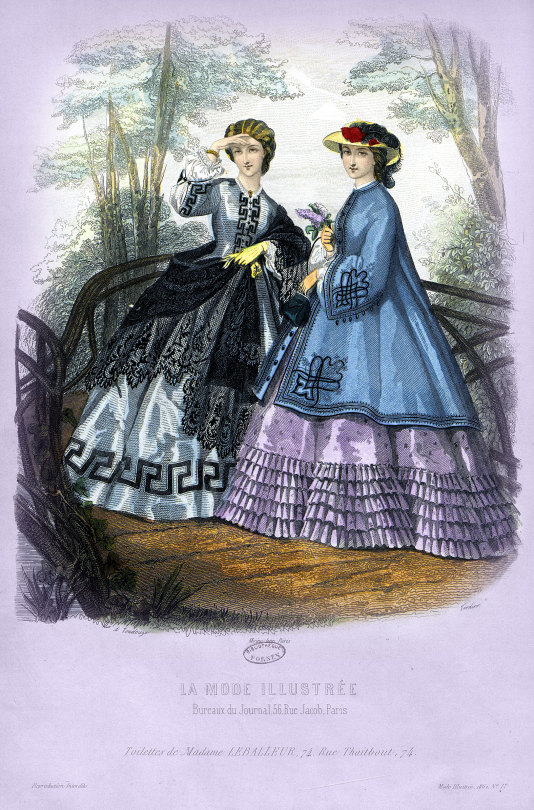
La Mode illustrée, no. 17, 26 avril 1862, Paris. Toilettes de Madame Leballeur, 74, Rue Thaitbout, 74. Ville de Paris / Bibliothèque Forney
Description de toilettes:
Robe de foulard couleur cendre de roses, à rayures noires transversales. Le bas de la jupe est garni d'une bordure à la grecque faite avec du velours noir ayant 3 centimètres de largeur; de chaque côté de ce velours, et suivant par conséquent les mêmes contours, se trouve un velours noir ayant un peu moins qu'un centimètre de largeur; corsage plat, fermé par des boutons de velours noir. Sur chaque devant est une grecque pareille à celle du jupon, mais exécutée avec des velours plus étroits; manches fendues sur le côté, retenues au bas par un double bouton en velours noir; la fente dépasse le coude et s'arrête à 10 ou 13 centimètres de l'entournure; une grecque encadre la manche et la fente; la sous-manche blanche passe au travers de cette fente; le poignet de cette sous-manche est demi-large et recouvert par une ruche composée de quatre rangs de guipure blanche ayant un centimètre de largeur. Mantelet-écharpe en taffetas noir brodé au crochet, en soie noire, garni d'une haute dentelle de Chantilly.
Robe en grenadine de laine couleur mauve, à semé de dessins de même couleur, mais plus foncés. Le bas de la jupe est garni avec cinq volants tuyautés (le dernier à tête), couvrant un espace de 20 centim.; saute-en-barque de cachemire gris orné de broderie en soie noire mélangée de lacets noirs. Chapeau rond en paille blanche garni d'une grande plume noire et d'une petite plume rouge.
—
Foulard dress in the color of ash roses, with transverse black stripes. The bottom of the skirt is trimmed with a Greek border made with black velvet 3 centimeters wide; on each side of this velvet, and consequently following the same contours, is a black velvet having a little less than a centimeter in width; flat bodice, closed by black velvet buttons. On each front is a fretwork similar to that of the petticoat, but executed with narrower velvets; sleeves slit on the side, held at the bottom by a double black velvet button; the cleft goes beyond the elbow and stops 10 or 13 centimeters from the armpit; a Greek key frames the sleeve and the slit; the white undersleeve passes through this slot; the wrist of this under-sleeve is half-wide and covered by a beehive made up of four rows of white guipure one centimeter wide. Mantelet-scarf in black taffeta embroidered with crochet, in black silk, trimmed with high Chantilly lace.
Dress in purple wool grenadine, strewn with designs of the same color, but darker. The bottom of the skirt is trimmed with five fluted flounces (the last with a head), covering a space of 20 centimeters; Gray cashmere boat jumper adorned with black silk embroidery mixed with black laces. Round white straw hat trimmed with a large black feather and a small red feather.
#La Mode illustrée#19th century#1800s#1860s#1862#periodical#fashion#fashion plate#color#description#Forney#dress#ensemble#Leballeur#mantle
49 notes
·
View notes
Text
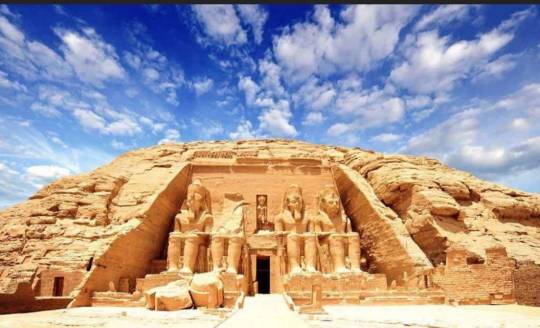
Great Temple of Ramses II
Abu Simbel, Egypt, Africa
... looks familiar ?
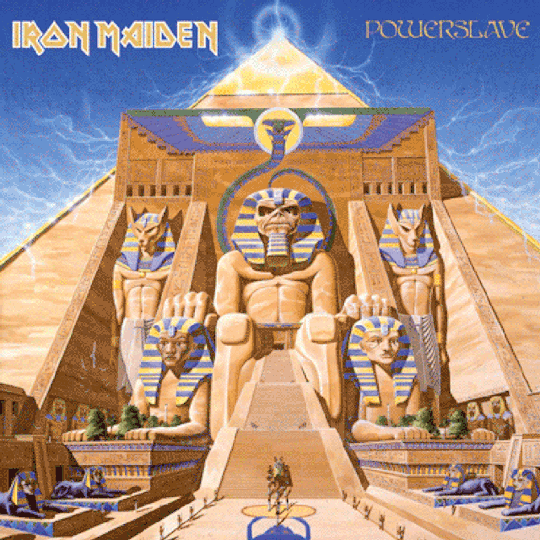
youtube
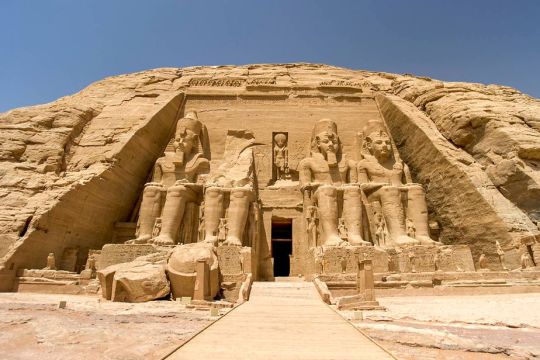
Carved out of the mountain on the west bank of the Nile between 1274 and 1244 BC, this imposing main temple of the Abu Simbel complex was as much dedicated to the deified Ramses II himself as to Ra-Horakhty, Amun and Ptah. The four colossal statues of the pharaoh, which front the temple, are like gigantic sentinels watching over the incoming traffic from the south, undoubtedly designed as a warning of the strength of the pharaoh.

Over the centuries both the Nile and the desert sands shifted, and this temple was lost to the world until 1813, when it was rediscovered by chance by the Swiss explorer Jean-Louis Burckhardt. Only one of the heads was completely showing above the sand, the next head was broken off and, of the remaining two, only the crowns could be seen. Enough sand was cleared away in 1817 by Giovanni Belzoni for the temple to be entered.

From the temple’s forecourt, a short flight of steps leads up to the terrace in front of the massive rock-cut facade, which is about 30m high and 35m wide. Guarding the entrance, three of the four famous colossal statues stare out across the water into eternity – the inner left statue collapsed in antiquity and its upper body still lies on the ground. The statues, more than 20m high, are accompanied by smaller statues of the pharaoh’s mother, Queen Tuya, his wife Nefertari and some of his favourite children. Above the entrance, between the central throned colossi, is the figure of the falcon-headed sun god Ra-Horakhty.
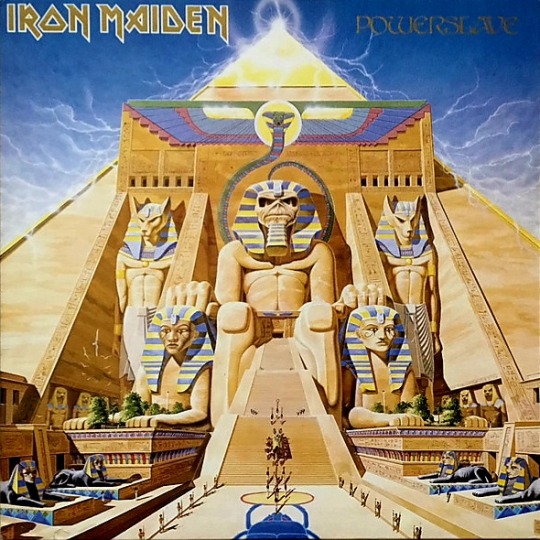

The roof of the large hall is decorated with vultures, symbolising the protective goddess Nekhbet, and is supported by eight columns, each fronted by an Osiride statue of Ramses II. Reliefs on the walls depict the pharaoh’s prowess in battle, trampling over his enemies and slaughtering them in front of the gods. On the north wall is a depiction of the famous Battle of Kadesh (c 1274 BC), in what is now Syria, where Ramses inspired his demoralised army so that they won the battle against the Hittites. The scene is dominated by a famous relief of Ramses in his chariot, shooting arrows at his fleeing enemies. Also visible is the Egyptian camp, walled off by its soldiers’ round-topped shields, and the fortified Hittite town, surrounded by the Orontes River.

The next hall, the four-columned vestibule where Ramses and Nefertari are shown in front of the gods and the solar barques, leads to the sacred sanctuary, where Ramses and the triad of gods of the Great Temple sit on their thrones.

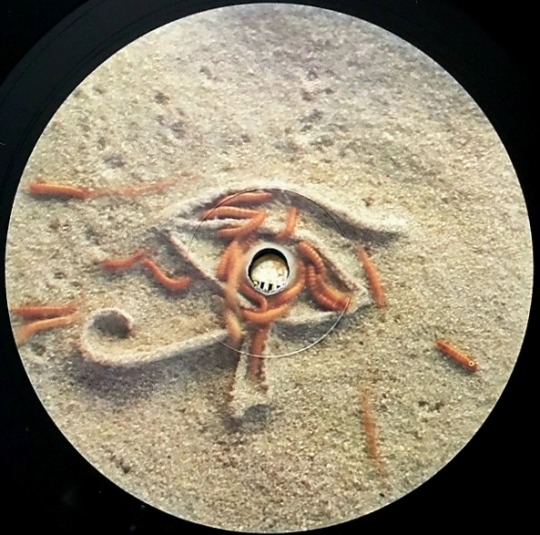
The original temple was aligned in such a way that each 21 February and 21 October, Ramses’ birthday and coronation day, the first rays of the rising sun moved across the hypostyle hall, through the vestibule and into the sanctuary, where they illuminate the figures of Ra-Horakhty, Ramses II and Amun. Ptah, to the left, was never supposed to be illuminated. Since the temples were moved, this phenomenon happens one day later.
youtube
21 notes
·
View notes
Note
Happy WBW!
I noticed there's a lot of islands and a lot of water on your world map. How advanced is seafaring technology?
Hello and thank you for the question! For most of these posts and questions I have focused solely on the Green Sea and excluded the rest of the world, however for this question I will go over some examples of seafaring peoples from various regions of Kobani.
This also gives me a chance to talk about some of the Forestfolk (non-human) populations of Kobani as they tend to be the greatest voyagers.
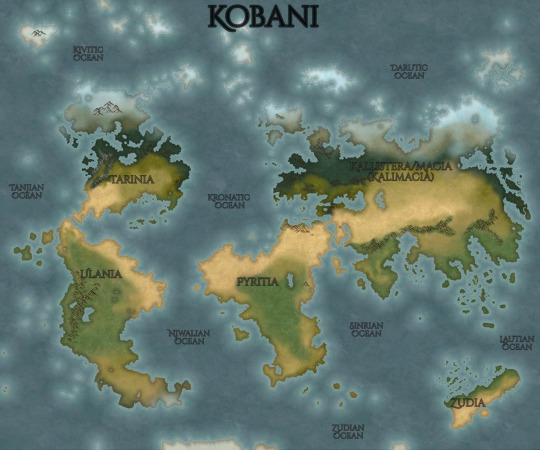
Kishetal (And most of the Green Sea)
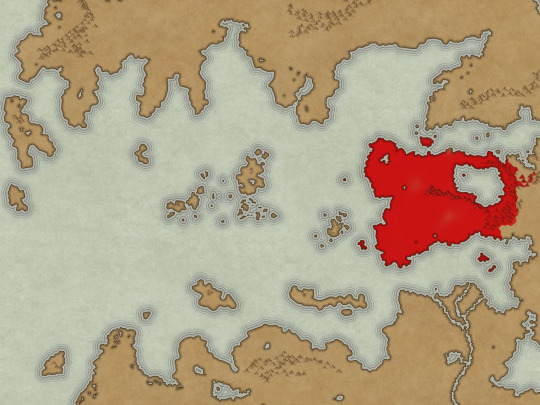
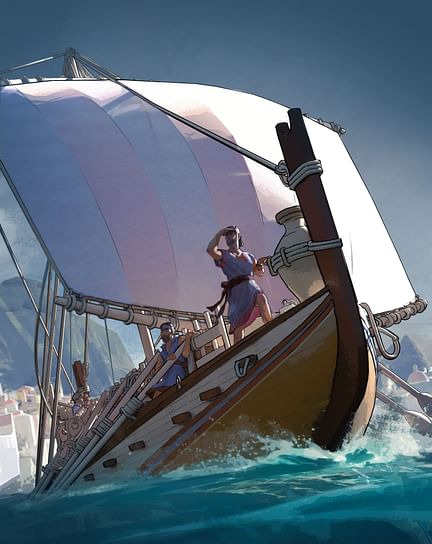
When it comes to seafaring technology it is important to recognize that the sail is still a relatively new invention in many parts of Kobani. In Kishetal for example the sail has only been a common aspect of seafaring for about 1,200 years. This means that Kishetal and the Kishite identity itself is actually older than the introduction of the sail to the region.
Kishite ships are generally long and low to the water, propelled by oar and sail. Kishite ships are morphologically similar to those used by other cultures in the Green Sea including the Korithians, the Shabalans, and the Apunians. The reason for this similarity is a shared ancestry, as all are at least in part inspired by the shipbuilding technologies of the now extinct Arkodians.
Warships have a convex stern and are propelled by large single-masted square sails and two banks of oars. Most but not all warships also possess large wooden rams at their front, designed to crush and sink enemy vessels.
The largest ships, war barques, while rarely built due to their exorbitant price have the potential to be massive, holding crews of up to 700 people.
Merchant vessels are more varied, typically wider and slower, designed to hold cargo. The largest merchant vessels may carry up to 500 tons of cargo, though 100-150 tons is far more common. Smaller vessels may only carry 5-10 tons of cargo.
Most Kishite ships and shipping routes still hug the coasts or else island hop, the open sea is a daunting and dangerous place even for experienced sailors.
While compasses have not been invented, sailors are able to navigate via stars maps, knowledge of currents, the movements of fauna, and by carefully observing the topography of the coast.
In rare cases sages may be employed on ships both to consult spirits as to directions and locations and to manipulate currents and winds.
Excerpt
The port of Chibal stretched out before Suru, its waters were host to ships from across the Green Sea. Merchants’ ships filled to bursting with cargo, their colored sails flapping in the wind. Goods from the Western Isles of Ikeni and Dirsia where the Green Sea met the Kronatic Ocean to the lands of Apuna upon the Putla Delta. Foodstuffs, beasts, weapons, timber, art, spices, delicate instruments, bundles of tablets and scrolls, and of course slaves. The harbor itself was a massive artificial reservoir, a rectangular structure of hewn stone that protected the ships and buildings that lined the many docks and piers. At the center of the harbor was an artificial island and crouched upon was a figure of bronze, a colossal statue. He had the face of a youth, soft and clean-shaven, his hair in long curls fell down his back. He wore naught but a shawl draped over his shoulders. Had the statue been standing the top of his head would have towered over the tallest of trees, rather he was bent, kneeling, hand outstretched, palm facing the heavens as if intent on scooping up a ship from the harbor below. Suru gazed up in wonder at the serene expression. “How is that possible?” “Money,” Otilia said shortly. She had far more pressing issues on her mind than the statue.
Ikopesh

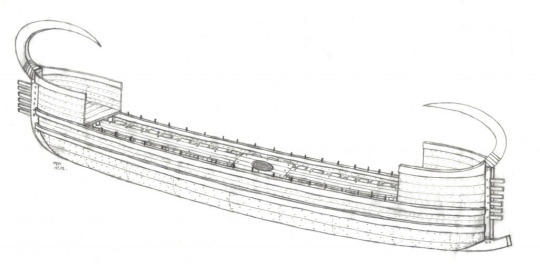
The Ikopeshi are the undisputed masters of the sea, at least in their region. It was the Ikopeshi who first developed and later introduced the sail to their neighbors. Ikopeshi ships are generally small compared to those of other Green Sea cultures, however they are typically sleeker and faster in their construction.
The majority (79%) of Ikopeshi belong to or descend from a race of forestfolk called the Iko. The Iko and those that retain their traits are naturally adapted to thrive at sea, this includes a natural proclivity for swimming, slightly increased lung capacities (which accounts for the stereotypical barrel chested look of Ikopeshi), and the ability to safely drink and process saltwater.
The Ikopeshi have no fear of the open sea and will gladly spend days or even weeks without ever stepping foot on dry land. This comfortability at sea is just one reason why the Ikopeshi are both popular maritime mercenaries and dreaded pirates.
Ikopeshi war canoes or urkebul (Ikopeshi urka-long, ebul- boat/ship) are long thin vessels, some over 90 ft in length, propelled by oar (Shown above, source). These ships are among the fastest in the Green Sea and are feared as vessels favored by pirates and raiders.
Ikopeshi warships and pirate ships, whenever possible, carry sages. Sages use the magic of ocean and wind spirits both to increase the speed of Ikopeshi ships and to keep the various sea-monsters which roam the Green Sea at bay. These sages are called Salt-Speakers.
Ikopeshi navigators are famed for their keen knowledge of astronomy and cartography. It is said that Ikopeshi ships that have ventured out of the Green Sea have traveled far enough to see the Northern Ices and far enough south to engage in battles with their fellow seafaring forestfolk, the Ru (Who I will talk about below.)
The Ru and On


The Ru and the On are among the most wide ranging people in Kobani alongside the Ikopeshi and The Paguai, all of whom are primarily composed of forestfolk. About 64% of those that belong to the Ru culture are forestfolk.
The most common Ru forestfolk population are the Ru'kui. The Ru'kui are quite small in stature, typically no more taller than 4ft. However they are muscularly built, with long and powerful forearms and webbed digits, well-suited to both swimming and the manipulation of nautical instruments. However their most unique trait is a pouch of fat that forms around the shoulders and back, giving the Ru'kui a slightly hunchbacked appearance. This functions in similar fashion to a camel's hump and when fully stocked, will allow a Ru'kui to travel for days or in extreme cases weeks at a time without food or drink. This is essential for the island hopping culture of the Ru.
Ru ships come in a variety of shapes the most common are the double hulled wukua built used for trade and the settlement of new islands. The second kind of ship, the vapokua are long and thin canoes designed for hunting large fauna between the rocks and outcroppings of southern Pyritia and the southern ice flows. The Ru are one of the only cultures in Kobani which lives and relies on both tropical and polar environments.
Ru traders travel to and trade with ports in four continents (Pyritia, Macia, Ulania, and Zudia).
As with the Ikopeshi the Ru are reliant on an advanced knowledge of astronomy, one which is passed down in sacred fashion.
One branch of the Ru settled in the eastern sea near Zudia, in time becoming ethnically and culturally distinct. The On, are the product of the intermingling of several forestfolk groups, chief among them are the Ru'kui and the now extinct, Ap. The On population is only 52% forestfolk. These forestfolk, the Onimui, are far taller than their Ru'kui ancestors, taller and broader even then most humans in their area. The Onimui possess broad shoulders and brightly colored skin which may range in color from coral red to turquoise. The Onimui are famed for their strength and stature, for this reason they have been called "The Jeweled Giants of the Southern Sea." The Onimui lack the humps of the Ru’kui and instead their fat deposits are distributed around their bodies, giving them their slightly bulky appearance, similar to blubber in some marine species.
On vessels are smaller and more delicately built than their Ru counterparts, and the On rarely visit the southern icefields when compared to their Ru cousins.
The Dorthuit

(I couldn't find a picture that quite fit what I wanted for this and I don't have the time or skills to draw my own.)
The Dorthuit refers to a confederation of 46 distinct tribes including 5 forestfolk tribes.
The Dorthuit are the only Polar culture which utilizes sails. The Dorthuit are also unique in that their vessels are primarily constructed from skin and bone rather than wood, due to the resources available to them. This however has not stopped them from creating impressive ships, some large enough to carry entire villages. These ships are incredibly light, and even the largest sailing ships and canoes, some of which may stretch to 50 or 60 feet in length can be lifted and carried on the shoulders of 20 or fewer individuals. This allows for the Dorthuit to effectively travel over sea, ice, and land with ease.
During the winter months when the ice is at its thickest and the largest ships can be turned upside down and used as temporary homes, their sails turned into blankets or other domestic implements.
Alongside these larger sailing ships are a vast array of canoes and rowing boats, well made for slipping around ice flows, well-suited to hunting large mammals and various polar sea monsters. It is traditional in many tribes for young people to build their first canoe as a right of passage into adulthood. This canoe will be used and repaired for the remainder of that person's life, and it is considered an ill omen if one's canoe is destroyed or otherwise lost. For this reason, it is not unusual for canoes to be destroyed or stolen during intertribal conflict as a form of spiritual warfare.
The Dorthuit are experts at reading the paths and movements of currents and their subsequent effect on ice flows. They are less reliant on astronomical navigation compared to other sea-faring cultures.
The Kavuru , Indosi, Balijivuri, and Kikiruru


These people inhabit the islands of southern Macia. Though they now speak several different languages and are culturally distinct all descend from the ancient “Boat People'' who were in actuality a mixture of groups including people from the Proto-Sinrian regions of the southern Sinrian Peninsula, what is now the kingdoms of Jini and Malu, alongside people from Wuru, Mu, Namut, Cholyasia, and even the Ru. This diversity of origins and cultural influences has made this region one of the most culturally dynamic in the world of Kobani.
The Kavuru and Kikiruru in particular are famed for their skill in ship-building. Both of these cultures build massive flat-topped ships, several of which may be lashed together to form floating cities, called kutaparung/kotaparun. The largest example of this is the Kavuru capital city of Gupatag, which is so massive that it even has agricultural land, one which rice, fruit, and livestock are reared. These massive structures, while ungainly, are technically navigable, and if unleashed from the reefs and landmasses which they are connected to, can be moved.
On a less spectacular note, these cultures make use of large vessels propelled by sail and oar. These are typically made with a lashed constructed from logs, lashed together with plant fibers and natural adhesives rather than with slats or planks as is more common in regions like the Green Sea. These vessels come in a number of forms, from broader and slower merchant vessels, to the sleeker, double-decked war ships known to raid as far west as the coast of Pyritia and along the coast of Mu.
Warships in particular are heavily decorated with dyes, gilding, and elaborate carving. While most of these vessels utilize a single mast and sail formulation, some varieties may include two or even three sails. These peoples are some of the earliest to adopt this particular technology. Sailing sages or Brine Saints, are of major importance in these cultures, particularly among the Indosi, where these sages often act as leaders or figures of authority. It is said that the best Sages may captain and steer a ship without a crew, eyes closed with only the guidance and assistance of the spirits of the wind and sea.
In Balijivuri culture spirits are invited to live on vessels themselves, offered regular offerings of cooked food and alcohol, in exchange these spirits (in theory) protect the vessel from the machinations of other less hospitable spirits, demons, and monsters.
These are just some of the seafaring cultures of Kobani and their technologies, hope that answered your question!
#worldbuilding#writeblr#fantasy world#world building#writing#testamentsofthegreensea#fantasy#fantasy writing#asks answered
7 notes
·
View notes
Note
What’s your favorite ship ( boats ) in phatomarine
For having a seafaring comic I have fully designed a downright sad number of boats (three). So I'll just talk about what I like about each one.
Mantaluna (the main ship that everyone is on): I love the external design, even if the sails really make no sense and would be a nightmare to actually maneuver. I love the dining room design and Phaedra's bedroom/study was tons of fun to lay out. I'm excited to spend more time on it! We're gonna spend a lot of time on it...
Golden Feronia (Vanna's ship): The most basic exterior but the best interior, IMHO. I loved drawing all her little trinkets and plants and vials, and all the nooks and crannies that Pavel could potentially hide/sleep in. It's modeled after a boat owned by one of my teachers in animation school, which he'd take the class out on every summer. The best boat for utility!
Pandion (Halea's lil boat): It's small and spooky and I want to design the interior someday - it's probably pretty decadent (and probably smells like cigarette smoke). It's meant to look a little like an Egyptian funerary barque.
I should honestly just clean up a bunch of my old boat sketches and give them silly names and stick them in random spots in the comic. This was a good reminder to do so. Thank you!
23 notes
·
View notes
Note
I saw you photo of the ship you sail in response to Lucy Bellwood’s sail anatomy and would love to hear more about it! I’ve never seen a square rigger with … is that a tiny crane for loading? So cool!
What's this? An excuse to talk about The Best Barque In The World, SV Tenacious? Well, I don't mind if I do!

First, yes, that is a tiny crane. She actually has two of them, for launching the two RHIBs.
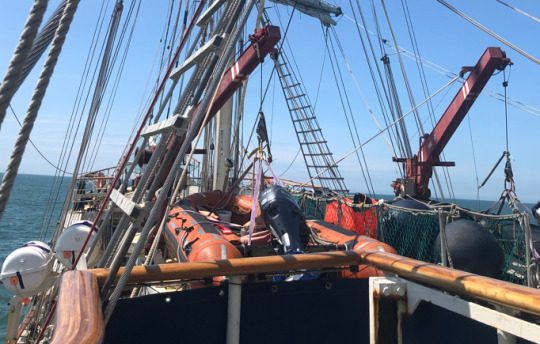
She also has a more traditional derrick, essentially a human-powered crane, which is used for loading heavy stuff and setting up the gangways.
Tenacious is far from being a traditional ship. She was launched in 2000, and is the only tall ship currently operating* that was designed specifically to be sailed by a disabled crew.
This means:
wheelchair lifts throughout the ship
decks wide enough for wheelchairs**
a talking compass, so people with visual impairments can't avoid taking their turn on the wheel!
power assisted steering and a joystick for people with limited dexterity
wheelchair clamps by the wheel, and seating for those who can't stand for long periods. (And for those who just don't want to, when there's a perfectly comfortable chair right there!)
rigging for a harness to allow people with limited mobility to get into the RHIBs
ascender systems that allow wheelchair users to take themselves up the masts. (Here's a photo of someone doing just that last week.)

On the more mundane side, there are showers with seats, handrails and adjustable showerheads. There are two or three clos-o-mat toilets, and the majority of the toilets are wheelchair-accessible. There are bunks which have anchor points for wheelchairs, and lifts to get in and out of the bunk.
More than that, however, is the ethos of the ship. There are no passengers on Tenacious. Everybody is part of the crew. Everybody stands their watch (and if I could get out of the morning watch, 4am-8am, I absolutely would). Everybody does their mess duty. Everybody takes part in happy hour (cleaning the ship - both the romantic stuff of the scrubbing the deck and the less so of scrubbing the toilets).
Everybody is assigned a buddy when they join the ship. If you're disabled, this is the person you turn to when you need a bit of extra help. (I have CFS. On my first voyage, I pushed myself so hard, because I wanted to get the absolute most out of the experience, that I ended up curled up on my bunk and sobbing because I was too tired to go and eat dinner. My buddy went and spoke to the cook and brought me a meal in my bunk.)
However, if your buddy isn't around, you can ask absolutely anybody, and they'll do it without making a big deal of it.
The Tenacious ethos is that everybody has something to offer, and everybody sometimes needs help. It doesn't matter whether you're disabled, currently able-bodied, or just completely unable to remember which bit of string to pull. You'll never be shouted at, and you'll never be made to feel a burden.
If my hard sell has worked and you want to sail on Tenacious - guess what? YOU CAN!
She's owned and operated by the Jubilee Sailing Trust and you can book a voyage on their website. There are bursaries available to help with cost.
*JST used to operate two tall ships. Unfortunately, COVID and financial issues meant the STS Lord Nelson was taken out of service, and is currently sitting semi-derelict in a Welsh dock, hoping for a buyer.
**Unfortunately, she can only take manual wheelchairs. Powered chairs are largely too heavy and too bulky, and also class as a fire risk. (Batteries and a lot of water aren't generally a good combination.)
14 notes
·
View notes
Text

Depuis plus de 20 années, La Maltière est une fabrique artisanale française de barques de pêche et de bateaux en aluminium soudés.
Chaque barque aluminium peut s’adapter à la demande du client. Ainsi, Chaque barque est entièrement fabriquée dans notre atelier à Levaré, Mayenne. La barque de pêche que nous proposons est une coque à fond plat.
Chaque barque est homologuée C.E et peut être immatriculée en catégorie D. Aussi, Chaque barque est une coque à fond plat soudée en fine épaisseur afin d’assurer une légèreté inégalée.
– Barque légère – Embarcation stable – Barques entièrement adaptables – Barque en aluminium, faite à la main, construite pour durer
#Barque#Bateau en aluminium#Bateau de pêche#Bateau à fond plat#barque a fond plat#Bateau léger#Bateau personnalisable#Barque de peche#Barque de pêche#Bateau de pêche en aluminium#bateau de pêche en aluminium#Canot en aluminium#Bateau en aluminium léger#Barque en aluminium#Barque aluminium#Barque légère#Barque fond plat#Barque design#Bateau#Depuis plus de 20 années#La Maltière est une fabrique artisanale française de barques de pêche et de bateaux en aluminium soudés.#Chaque barque aluminium peut s’adapter à la demande du client. Ainsi#Chaque barque est entièrement fabriquée dans notre atelier à Levaré#Mayenne. La barque de pêche que nous proposons est une coque à fond plat.#Chaque barque est homologuée C.E et peut être immatriculée en catégorie D. Aussi#Chaque barque est une coque à fond plat soudée en fine épaisseur afin d’assurer une légèreté inégalée.#– Barque légère#– Embarcation stable#– Barques entièrement adaptables#– Barque en aluminium
1 note
·
View note
Text

This ship (well, barque) is the highly unproblematic SV Tenacious. She's 23 years old and she's unique.
She's the only ship sailing that was designed to be sailed by a crew of mixed physical abilities. There's a speaking compass so blind people can steer. There are bunk vibrators so deaf people can receive alerts. There are lifts between decks so wheelchair users can get around, and anchor points throughout the ship so chair users can continue to get around in bad weather. There are hoists that make it possible for wheelchair users to pull themselves up the mast. If they also have trouble with their arms, no worries, the rest of the crew will haul them up.
On the hygiene side, there are wheelchair-accessible showers, with support railings and stools. There are wash-and-dry toilets.
She was designed purely with physical disabilities in mind, but they're working on making her more accessible to people with mental disabilities, too.
She's fucking amazing.
One time, I sailed her into Canary Wharf. One of our watch leaders, one of the most amazing sailors I know, who's taken her around Cape Horn, is a wheelchair user. Once we arrived in Canary Wharf, they put us on a dock without wheelchair access. This bloke could sail a ship across the Atlantic, but couldn't get off the fucking dock.
(So we rigged a sling and carried him off the dock, because we're fucking sailors.)
Anyway, Jubilee Sailing Trust. They're awesome. Sail with them.
We need to go back to using sailing ships full time like immediately. Yes it would take longer to get places but the Aesthetic is unmatched
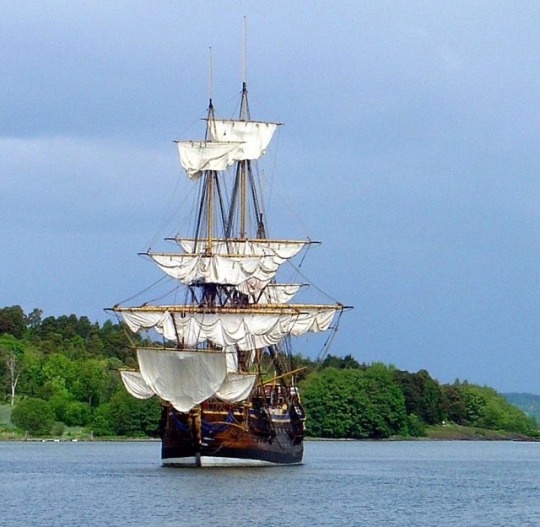
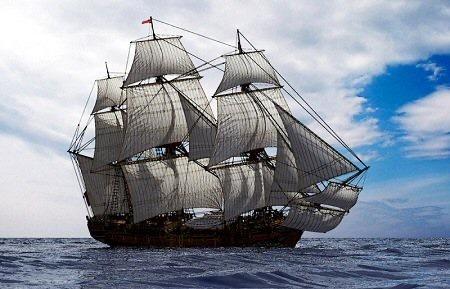
Like there is nothing sexier hthan this
285K notes
·
View notes
Note
spotify wrapped: idk how far the list goes, so ignore any numbers that don't show up! 12, 34, 6, 10, 19, 78, 63.
United in Distaste - Starry the Musical
(In general, if you want to see some of the most prominent Impressionists of the late 19th-early 20th century bitching at one another and making fun of their art styles, this is the song for you.)
We paint our destiny with ecstasy To change all humankind United in distaste we will embrace The madness we designed Or lose our mind
I Can See You - Abra Salem (TSwift cover)
See here.
A New Horizon - Starry the Musical
See here.
My Own Miracle - Citizen Soldier
I should feel strong, but I just feel sad So just let me grieve what I never had
Beautiful Things - Benson Boone
And I hold you every night And that's a feeling I wanna get used to But there's no man as terrified As the man who stands to lose you
Burn - Treason: The Musical
If you're a Catholic, you're a Heathen That's the tale they'll tell But when we're at the gates of Heaven They'll be down in Hell
My Mother Told Me - Nati, Cullen Vance
Stand up on the prow Noble barque I steer (Steady) steady course to the haven Hew many foe-men
1 note
·
View note
Text

UNDER SAIL
Barque Cuauhtémoc
ARM Cuauhtémoc is a sail training vessel of the Mexican Navy, named for the last Mexica Hueyi Tlatoani Cuauhtémoc who was captured and executed in 1525.
She is the last of four sister ships built by the naval shipyards of Bilbao, Spain, in 1982, all built to a design similar to the 1930 designs of the German firm Blohm & Voss, like Gorch Fock, USCGC Eagle and the NRP Sagres.
Built at the Celaya Shipyards in Bilbao, she was designed by Naval Engineer Juan José Alonso Verástegui. Her keel was laid on July 24, 1981, and she was delivered to the Mexican Navy in Bilbao on July 29, 1982.
Her first commander was Captain Manuel Zermeño del Peón, in command of a crew of cadets from the Mexican Naval Academy who received the ship and brought Cuauhtémoc home to Mexico.
Like her sister ships, Colombia's Gloria, Ecuador's Guayas and Venezuela's Simón Bolívar, Cuauhtémoc is a sailing ambassador for her home country and a frequent visitor to world ports, having sailed over 400,000 nautical miles (700,000 km) in her 38 years of service, with appearances at the Cutty Sark Tall Ships' Races, ASTA Tall Ships Challenges, Sail Osaka, and others.
1 note
·
View note
Text
The pinnacle of technology
I am lucky enough to be able to do some volunteer work. A couple of days each month, I go to a nearby archaeology museum and do some volunteer work.
in the past that meant cleaning artifacts - when they do a dig they put whatever they find in paper bags and in the lab we'd follow a protocol to clean the dirt off as a precursor to identifying the artifact.
Recently, though, they've had me gluing labels on the artifacts. This is actually a super important thing, because most artifacts get put back in their bags, which will go into a box or drawer and sit for most of the next century until some grad student wants to do research on revolutionary-era pottery in the US mid-Atlantic region. And, see, when that happens there's a chance they'll find a bag of 80 pottery sherds, with 80 labels in the bottom of the bag. There are stories of centuries-old drawers being opened only to find all the labeling had fallen off or faded to illegibility. Which is a disaster; artifacts are important for their context: the specific location in which they were found, and what else was found with them. We get visitors who ask "What is the most valuable item you have?" and there's no answer because it's not like a piece of wood from a ship matters unless you know it's from a barque which was buried in the mud of the river in 1783; otherwise it's just a soggy chunk of wood.
Now, here's where I'm gonna go off the rails. This is relevant, I promise.
The two most important forms of technology are materials technology and information technology. Everything else is finding clever applications for those two things.
I know, I know - "But what about-" - we only did that because we were able to create the materials with which to do it. We only know about it because we developed a way to observe, describe, and understand the world around us in a systematic, repeatable fashion. These technologies are so ubiquitous that we don't think of them as technologies. But consider: we can survive in any climate on Earth, we can live in one place and have a healthy diet, because of our mastery of textiles and ceramics. They are literally what makes us human.
And we have been able to keep, and improve upon, those technologies because we developed means of recording and transferring knowledge: the spoken word, and writing.
So, going back to archaeology. Right, context. Excuse me: CONTEXT. In archaeology, every artifact has a context number. In American archaeology, the context numbers have a specific meaning. They are a code which is thus
<Two-digit state code> <Two-letter region code> <Numeric designation of dig site> <Context number>
Okay, so the state codes are ostensibly in alphabetical order - e.g., since Virginia is the 44th state alphabetically, the number for Virginia is 44. However, this system pre-dates the admission of Hawaii and Alaska, so they're I think 49 and 50.
The region code is usually, but not always, a reasonable abbreviation for the town or city. Like, if there's a dig in Charlottesville I believe it's designated CV. These are not necessarily tied to a town, however - there are specific regions laid out and certain local governments have authority over digs in their region. This can come into play when, like last week, we had some guy show up with some rocks he found in his yard. On asking, it turns out he does not live in our region and we sent him packing because we cannot do a dig there even if we wanted [He has been shopping around to various archaeology authorities because while he's convinced he found ancient artifacts they're really just rocks, but anyway]
The dig site number is given by the regional authority. They can do it however they want - in order by site opening, or by some system based on locations, whatever. However, the dig site is mapped out by the lead archaeologist and surveyed to they know very precisely where the dig is and where each grid is in their site map.
The context is the specific grid and depth. It's usually separated from the site number by "CN" to prevent confusion.
So, if we opened a site in Charlottesville, a potential context number might be:
44CV9876CN0003.
That would tell me it's in Charlottesville, Virginia; that if I want more details I contact the regional authority there for information on dig site 9876, and then using the site map on file I look for grid and context 0003. With that I can get where a given artifact was down to a square meter (and possible better if it was a feature, but I digress).
This is a demonstration of a very high level of information technology. See, we've got a carefully surveyed map of the region already in place, courtesy of the USGS. The USGS not only creates detailed maps of the USA, it designated or places permanent markers which allow anyone to find out very precisely where they are on those maps. These markers are long bronze rods driven into the ground - materials technology, creating something which will not degrade in that environment - and you use surveying tools (more materials tech!) to site from those markers. Then, using our measurement system which is clearly designated and consistent, you can make a site map and have those exact context numbers I mentioned before.
With that, I can print out a page of those context numbers on acid-free paper. I apply a base coat of B-72, which is a n acryloid in acetone. It's great stuff, drying and curing quickly but not so quickly I can't put a slip of paper on it to hold it in place; after waiting 15 minutes I put on a top coat, sealing the paper so the ink isn't exposed to air and does not fade. And if I screw up, I can use acetone to dissolve the B-72 and try again, without damaging the pottery I'm labeling.
These are high applications of information and materials technology. They represent millennia of development in each field, and while it looks like I'm just gluing slips of paper onto tiny pieces of pottery, in truth what I'm doing would not have been possible before the modern era.
1 note
·
View note